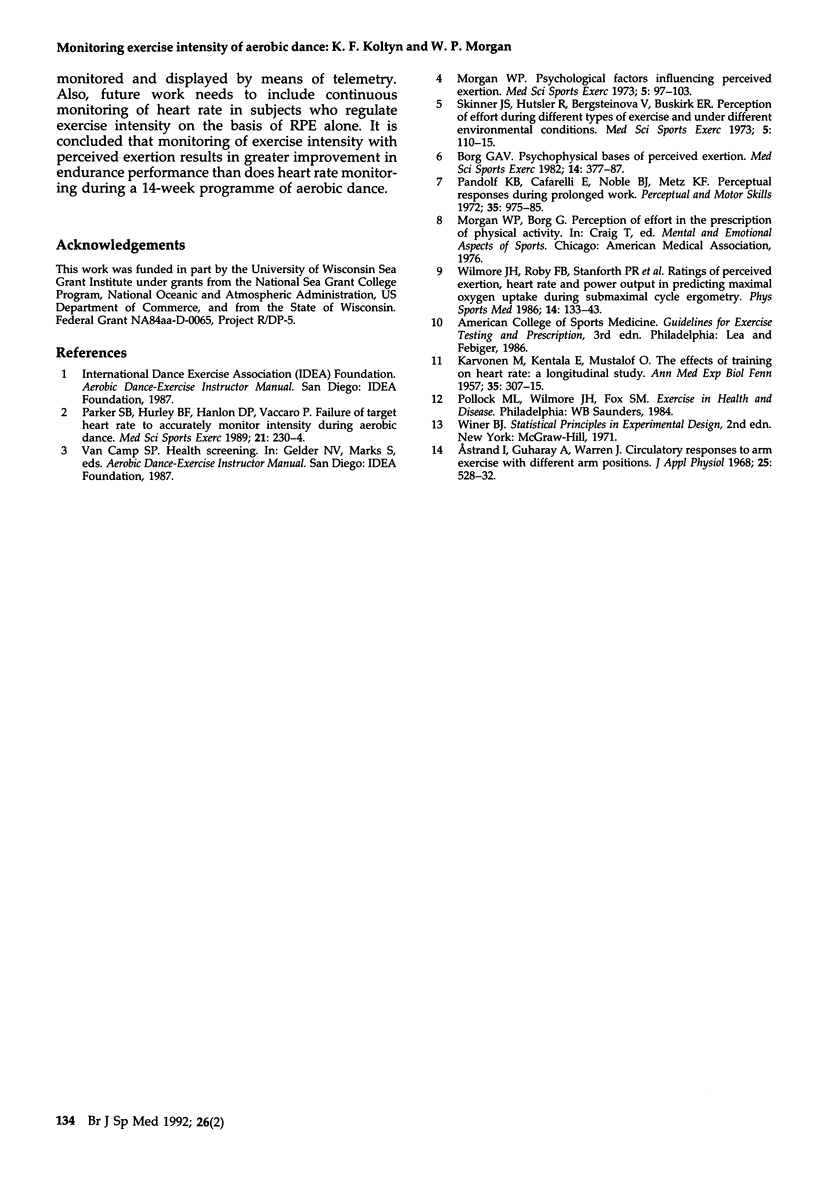Abstract
The purpose of this investigation was to compare the effectiveness of using ratings of perceived exertion (RPE) with heart rate in the monitoring of exercise intensity during aerobic dance instruction. Thirty-eight students who enrolled in aerobic dance classes used heart rate to monitor exercise intensity while 38 additional students used RPE to monitor exercise intensity during a 14-week course. Classes met twice a week for 50 min and all outside workouts were recorded. The groups did not differ with respect to the number of outside workouts. The dependent variable was endurance performance as measured by the distance run in 15 min. Data were analysed with a repeated measures analysis of variance (ANOVA) for multifactor experiments. There were significant trials (P less than 0.0001) and interaction (P less than 0.05) effects, and both groups improved significantly in endurance performance during 14 weeks of training. However, the group using RPE to monitor exercise intensity had a significantly greater gain in endurance. The heart rate group had a mean increase of 6% (166 m) whereas the RPE group increased 11% (274 m). It is concluded that during aerobic dance the monitoring of exercise intensity with RPE is associated with greater improvement in endurance than is heart rate monitoring.
Full text
PDF


Selected References
These references are in PubMed. This may not be the complete list of references from this article.
- Astrand I., Guharay A., Wahren J. Circulatory responses to arm exercise with different arm positions. J Appl Physiol. 1968 Nov;25(5):528–532. doi: 10.1152/jappl.1968.25.5.528. [DOI] [PubMed] [Google Scholar]
- Borg G. A. Psychophysical bases of perceived exertion. Med Sci Sports Exerc. 1982;14(5):377–381. [PubMed] [Google Scholar]
- KARVONEN M. J., KENTALA E., MUSTALA O. The effects of training on heart rate; a longitudinal study. Ann Med Exp Biol Fenn. 1957;35(3):307–315. [PubMed] [Google Scholar]
- Morgan W. P. Psychological factors influencing perceived exertion. Med Sci Sports. 1973 Summer;5(2):97–103. [PubMed] [Google Scholar]
- Pandolf K. B., Cafarelli E., Noble B. J., Metz K. F. Perceptual responses during prolonged work. Percept Mot Skills. 1972 Dec;35(3):975–985. doi: 10.2466/pms.1972.35.3.975. [DOI] [PubMed] [Google Scholar]
- Parker S. B., Hurley B. F., Hanlon D. P., Vaccaro P. Failure of target heart rate to accurately monitor intensity during aerobic dance. Med Sci Sports Exerc. 1989 Apr;21(2):230–234. [PubMed] [Google Scholar]
- Skinner J. S., Hutsler R., Bergsteinová V., Buskirk E. R. Perception of effort during different types of exercise and under different environmental conditions. Med Sci Sports. 1973 Summer;5(2):110–115. [PubMed] [Google Scholar]


